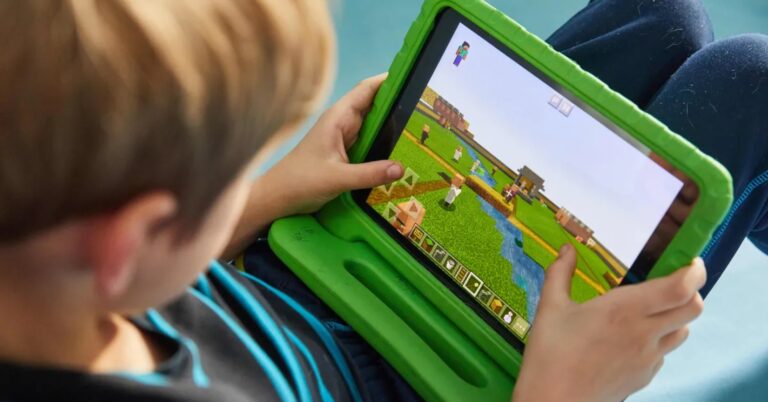Getting your child to eat vegetables can feel like an uphill battle. But it’s not about forcing broccoli down their throat – it’s about how you present the green stuff.
The trick is in your language; how you talk about veggies can make all the difference.
Here’s the thing – we want our kids to choose veggies, not because they have to, but because they want to. To do this, I’ve got some phrases up my sleeve that can help.
So, let’s dive into 10 phrases that will make your child more receptive to vegetables. These little gems of persuasion might just turn your little one into a veggie lover.
1) “I love how colorful these veggies are!”
One of the most challenging aspects of getting kids to eat vegetables is overcoming the ‘yuck’ factor.
Kids often decide they don’t like veggies before they’ve even tried them, and it can be challenging to change their minds.
But here’s a little tip – children are very responsive to colors.
Think about it. Kids are naturally drawn to colorful toys, books, and clothes. So why not use this same principle when it comes to food?
Instead of saying, “Eat your vegetables,” try saying, “Look at how colorful these veggies are! They’re so vibrant and fun!”
This approach changes the focus from the taste (which they might be unsure about) to the appearance (which is more likely to appeal to them).
By doing this, you’re subtly influencing your child’s perception of vegetables, making them more likely to give them a try.
This isn’t tricking your child into eating vegetables – it’s reframing them in a way that appeals to their natural curiosity and love of color.
2) “When I was your age, carrots helped me see better in the dark”
Now, this one is a bit of a personal story. I remember when I was a kid, my mom used to tell me that eating carrots would help me see better in the dark. Whether it was true or not, it worked! I gobbled up those carrots hoping to acquire night vision superpowers.
So, I decided to use this same technique with my own kids. One evening, as we sat down for dinner, I casually mentioned, “You know, when I was your age, I used to eat lots of carrots because they helped me see better in the dark.”
Their eyes lit up with interest. They were intrigued by the idea that food could give them a superpower. And just like that, they began munching on their carrots with renewed enthusiasm.
It’s important to note that I wasn’t lying or manipulating my children. Yes, the idea of suddenly developing night vision is a bit of an exaggeration, but carrots are indeed rich in vitamin A, which is good for eye health.
What I did was simply make an ordinary vegetable seem extraordinary. And it made all the difference!
3) “Did you know that peas are actually seeds?”
Peas are a fantastic source of vitamins and minerals, but getting your child to see their appeal can be a bit tricky. Instead of simply insisting they eat them, try turning dinner into a mini science lesson.
Say something like, “Did you know that peas are actually seeds? We’re eating tiny little seeds that could grow into tall pea plants.”
This makes peas sound much more exciting and intriguing while it also opens up a conversation about how vegetables grow.
It’s a fun and engaging way to make vegetables more appealing to children. Plus, it teaches them something new about the world around them.
4) “Let’s make our own vegetable superheroes!”
Children love stories and characters, and this can be a powerful tool in making vegetables more appealing.
Rather than just serving up a plate of veggies, why not turn them into heroes of their own story?
Say something like, “Let’s make our own vegetable superheroes! This broccoli is ‘Broccoli Braveheart’, fighting off bad health. And this carrot is ‘Captain Carrot’, speeding around to keep us energized.”
By turning vegetables into characters, you’re making mealtime more fun and subtly teaching your child about the benefits of each vegetable.
This approach can make them more interested in trying different vegetables and lead to a more balanced diet.
5) “These bell peppers crunch just like your favorite chips!”
Texture plays a big role in whether kids enjoy certain foods or not. Many children love the satisfying crunch of chips or crackers. So why not compare that to the natural crunch of fresh veggies?
Try saying, “These bell peppers crunch just like your favorite chips!” This encourages your child to think of the vegetable not as a chore to eat, but as an exciting, crunchy snack.
It’s all about presenting the veggies in a way that appeals to your child’s preferences. You’re not tricking them, but simply highlighting the positive aspects in a way they can relate to.
6) “Eating spinach makes you strong and healthy, just like your favorite athlete”
Children often have heroes or role models they look up to, whether they’re athletes, superheroes, or characters from their favorite books.
You can use this admiration to make vegetables more appealing by saying something like, “Did you know that your favorite athlete eats spinach to stay strong and healthy?”
This heartfelt approach makes the connection between eating healthy foods and achieving the strength and vitality that their heroes possess.
It’s not using manipulative tricks, it’s helping your child understand the real benefits of eating vegetables in a way that is meaningful to them.
7) “Sweet potatoes remind me of grandma’s warm and comforting meals”
Food is often tied to memories and emotions. For me, the smell of sweet potatoes cooking takes me right back to my childhood, sitting in my grandma’s kitchen, eagerly waiting for her delicious, home-cooked meals.
So, when I serve sweet potatoes to my kids, I tell them, “These sweet potatoes remind me of the warm and comforting meals your grandma used to make.”
Sharing this with them adds a layer of sentimentality and nostalgia to the humble sweet potato, but it also weaves family history and tradition into their meal.
Even if they don’t immediately fall in love with sweet potatoes, they’ll have a meaningful story associated with them. And who knows? Maybe one day they’ll share the same story with their own children.
8) “How about we try it together?”
Children often feel more confident and excited about trying new things when they are not doing it alone.
When you introduce a new vegetable, make it a shared experience by suggesting, “How about we try these zucchini noodles together?”
This approach can make your child feel supported and less anxious about trying the new food. Plus, it can turn mealtime into a fun, bonding experience.
The goal is to create a positive and relaxed atmosphere around eating vegetables. Your child is more likely to be receptive to them this way.
9) “You’re the taste tester for this new recipe”
Getting your child involved in the cooking process can make them more open to trying the end result.
Next time you’re preparing a meal with vegetables, invite your child to be the official “taste tester.” This can make them feel important and included in the process, sparking their curiosity about the food they helped prepare.
This approach can transform mealtime from a chore into an exciting adventure. It’s not only about eating the vegetables but also about discovering new flavors and textures together. After all, who can resist tasting a dish they’ve had a hand in making?
10) “Let’s play a game with our food”
Who says mealtime can’t be fun? Turning eating vegetables into a game can make your child more receptive to them.
For example, you could say, “Let’s see who can crunch the loudest,” when serving raw carrots or celery. Or, “Let’s see who can balance the most peas on their fork,” when serving peas.
This method can make mealtime more entertaining and takes the pressure off eating vegetables. It becomes less about the food itself and more about the fun you’re having together.
Food for thought: It’s about connection
In the grand scheme of things, getting your child to eat their vegetables is about more than just nutrition. It’s about forming connections – with food, with health, and with each other.
When we engage in conversation around the dinner table, we’re not just talking about vegetables. We’re weaving stories, sharing experiences, and teaching life lessons.
Whether it’s through the vibrant colours of bell peppers, the crunch of fresh carrots, or the heartwarming tales of grandma’s meals, each phrase is an opportunity to foster a deeper understanding and appreciation for food.
At the end of the day, it’s not just eating vegetables. It’s fostering a lifelong relationship with healthy eating habits, an appreciation for food diversity, and a sense of adventure.
Eating vegetables isn’t just a mundane task – it’s a journey of discovery, an adventure to embark on, and a tale to tell. As we share these phrases with our children, we’re not just filling their plates; we’re nourishing their minds and hearts.
And maybe – just maybe – we’re making vegetables a little more exciting along the way.







